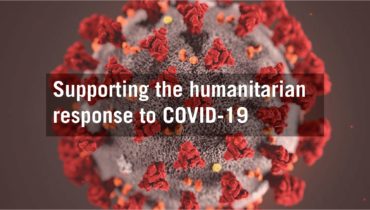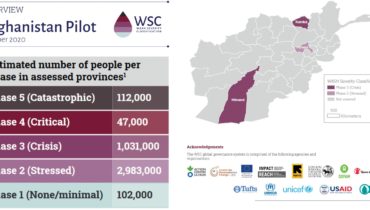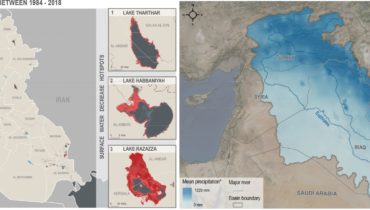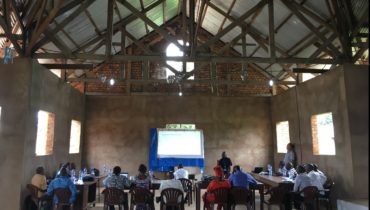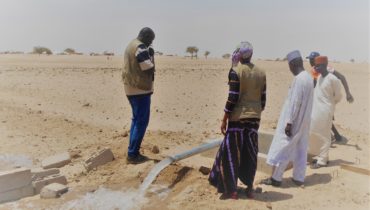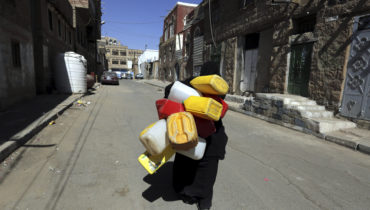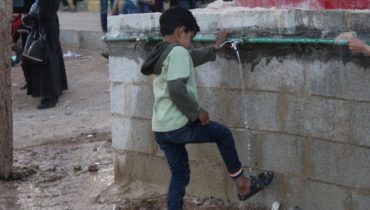Waterpoint Density in Al Za’atari Refugee Camp
19 July 2013
Voices from the Field : Featured Map
Jordan : This map shows concentrations of water access points, both standalone tanks and those in WASH Centres, throughout the Za’atari camp – the biggest camp for Syrian refugees in the country. It was made by REACH in partnership with UNICEF in response to a need of better understanding refugees’ water access ability and based on a specific request from aid actors.
The map is based on data collected by the REACH Za’atari Field Team. The team has been trained in use of GPS receivers to record exact locations of water access facilities. The specific situation to map was waterpoint access, without differentiating between types of facilities, and so they were all displayed on the map as identical points. Then, a spatial density function was used to visualise areas of high and low concentrations of these points on a light to dark colour scale.
The map served two purposes. Firstly, with all the water in the camp delivered by trucks, having an exact picture of waterpoint locations clearly shows gaps between them allowing to direct additional trucks to those areas and thus helps to ensure more even water supply. It therefore directly contributed to water being delivered to underserved areas. Secondly, the map was used for planning further waterpoint management : with more high-capacity WASH facilities being completed, and consequentially the need for standalone water tanks gradually diminishing, identifying areas with high concentrations of tanks helped to prioritise their removal.
Click here to see the map.
To learn more about REACH’s work in Jordan, please visit our country page.
About the map author: I am a geographer and GIS specialist working for the past six months with REACH to map various aspects of the current Syrian crisis. I focus on refugee camp mapping in Jordan and Iraq by providing camp actors relevant and timely information in a form that is easy to understand and act on.


